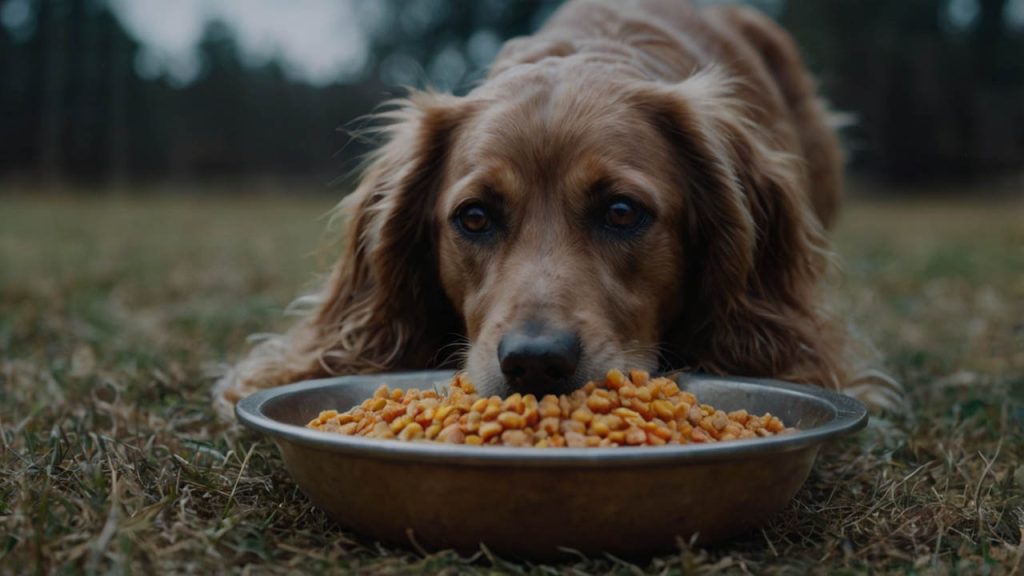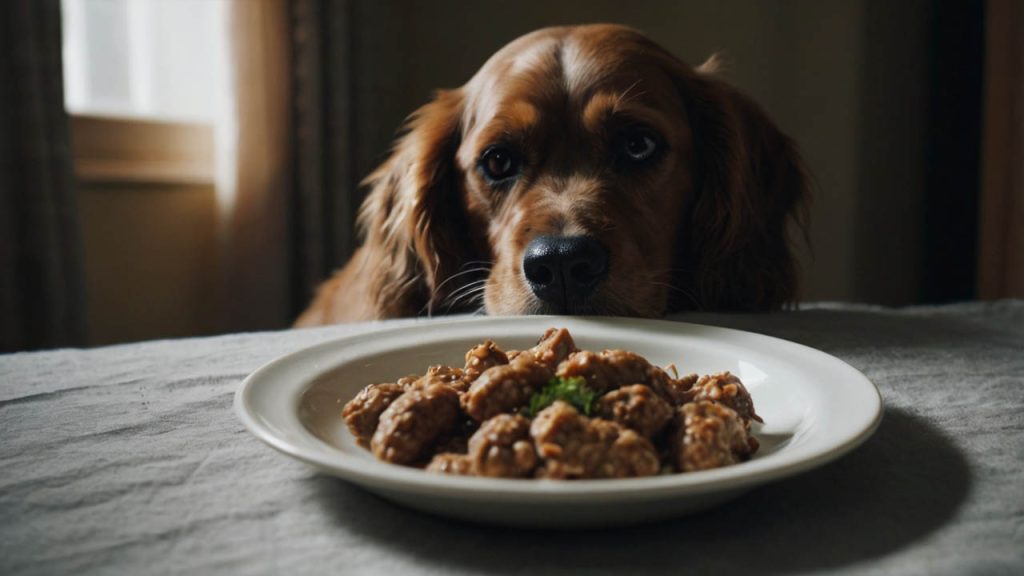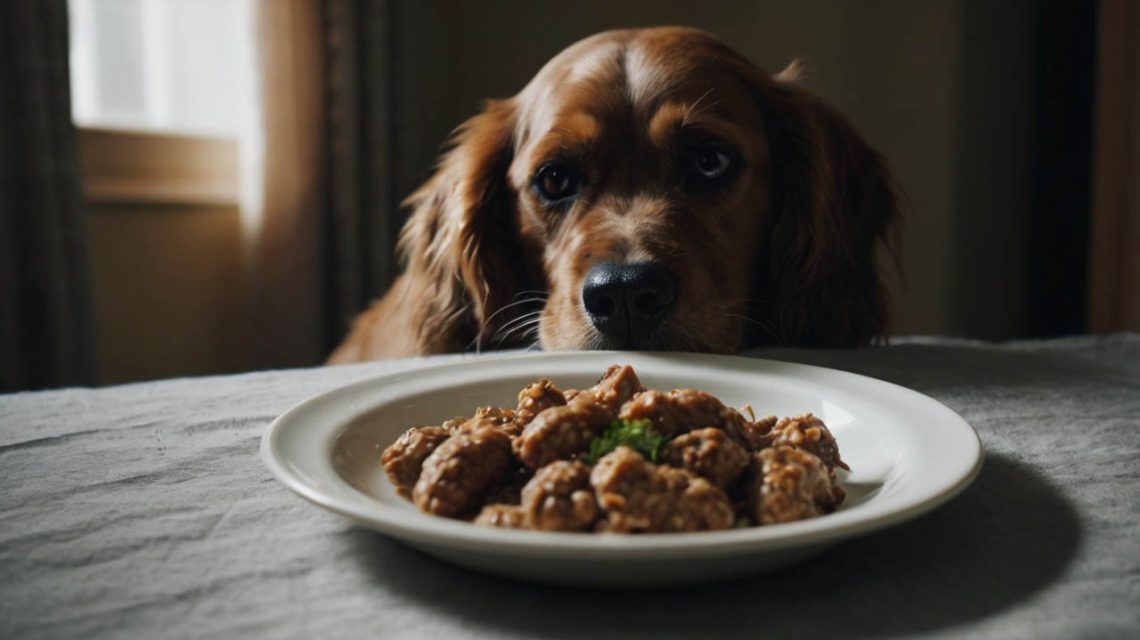What to Feed a Sick Dog with No Appetite: A Complete Recovery Guide
There is no feeling quite as helpless as seeing your once-energetic dog looking miserable, lethargic, and completely ignoring their food bowl. When illness strikes, a dog’s refusal to eat can be one of the most alarming symptoms. This immediately leads to the urgent question: what to feed a sick dog with no appetite? Providing the right kind of gentle, enticing nourishment is absolutely critical for their recovery, as it gives their body the fuel it needs to heal. However, approaching this challenge incorrectly can cause more harm than good.
This definitive guide provides a complete storyline for coaxing your sick dog to eat. We will cover the vital first step you must take before offering any food, explore vet-recommended foods that are easy on the stomach, and reveal proven techniques to stimulate their appetite. Consequently, you will be empowered to provide the supportive care your dog desperately needs during this difficult time.
Before You Ask ‘What to Feed a Sick Dog with No Appetite,’ Call Your Vet
This is the most critical step, and it is non-negotiable. While this article offers safe and effective strategies for encouraging eating, a loss of appetite is a symptom, not a diagnosis. Only a veterinarian can determine the underlying cause of your dog’s illness. Self-diagnosing can be dangerous and delay life-saving treatment.
Therefore, before you start cooking, pick up the phone. Your vet will provide a diagnosis, prescribe necessary medications, and give you specific instructions on when and what to feed your dog.

Red Flags: When a Vet Visit is an Immediate Emergency
You must seek immediate veterinary care if your dog’s lack of appetite is accompanied by any of the following symptoms:
- Extreme lethargy or unwillingness to move.
- Repeated episodes of vomiting or diarrhea.
- Any visible blood in their vomit or stool.
- A swollen, hard, or painful abdomen.
- Signs of dehydration (dry gums, sunken eyes, low skin elasticity).
- Complete refusal to drink water for more than 12-24 hours.
Your vet’s guidance is paramount. The information here on what to feed a sick dog with no appetite is designed to work in tandem with, not replace, professional veterinary care.
Why Won’t My Sick Dog Eat? Understanding Anorexia in Dogs
A dog that refuses to eat (a condition known as anorexia) isn’t being stubborn; their body is sending them powerful signals. Understanding the reasons behind their refusal can help you approach the situation with more empathy and effectiveness.
- Nausea and Pain: This is the most common reason. Just like humans, dogs have no desire to eat when they feel nauseous, have a stomach ache, or are in pain. Eating could make them feel worse, so their body instinctively avoids it.
- Reduced Sense of Smell: A dog’s sense of smell is intrinsically linked to their appetite. As noted in research on canine olfaction, illness (especially with respiratory issues) can dull this sense, making food seem unappealing.
- Protective Mechanism: For gastrointestinal issues, a temporary fast allows the inflamed digestive tract to rest and heal without the work of digesting food.
Your job isn’t to force-feed them but to offer something so gentle and appealing that it bypasses these natural aversions.

The Best Options for What to Feed a Sick Dog with No Appetite
When your vet has given you the okay to offer food, the goal is to provide something that is both highly digestible and enticing. This is where a temporary bland diet comes in. This is the foundation of what to feed a sick dog with no appetite.
The Vet-Approved Bland Diet: Your Starting Point
A bland diet is low in fat and fiber, making it extremely easy for a sensitive stomach to process. The classic, vet-recommended recipe is simple:
- Lean Protein: Boneless, skinless chicken breast is the go-to. Boil it in plain water (no salt, oil, or seasonings) until cooked through, then shred it.
- Simple Carbohydrate: Plain, cooked white rice acts as a binder and is very easy to digest. Do not use brown rice, as its high fiber content can be too harsh.
- The Ratio: Mix about one part shredded chicken to two parts rice. Start with a tiny portion, just a tablespoon or two, to see if your dog can keep it down.
Protein and Carb Alternatives if the Basics Don’t Work
If chicken and rice don’t pique their interest, you have other excellent options:
- Other Lean Proteins: Extra-lean ground turkey or ground beef (93-99% lean) can be used. Boil the meat and thoroughly drain all fat before mixing with a carbohydrate.
- Whitefish: Flaky, mild fish like cod or pollock, steamed or boiled, can be very appealing to dogs.
- Canned Pumpkin: 100% pure canned pumpkin (NOT pumpkin pie filling) is a miracle food. It’s gentle and its soluble fiber can help with both diarrhea and constipation. You can mix a spoonful with their protein.
- Meat-Based Baby Food: Stage II meat-based baby food (in flavors like chicken, turkey, or beef) is a common trick. Ensure it contains no onion or garlic powder. Its smooth texture and strong scent can be irresistible.
How to Entice Your Dog: Proven Strategies for Zero Appetite
Often, the food itself isn’t enough; you need to employ specific techniques to break through their reluctance. This is the core challenge of determining what to feed a sick dog with no appetite.
The Power of Aroma: Warming Food and Adding Toppers
A sick dog’s appetite is primarily driven by scent.
- Warm it Up: Gently warming their food for 10-15 seconds in the microwave releases its aroma, making it far more appealing. Stir it well to ensure there are no hot spots.
- Add Bone Broth: Pour a few tablespoons of warm, low-sodium, onion-free bone broth over their food. The meaty scent is a powerful appetite stimulant. This also helps with hydration.
Hydration is Key: Creative Ways to Offer Fluids
Dehydration is a greater immediate threat than a lack of food.
- Broth as a Drink: Offer bone broth in a separate bowl. Many dogs who refuse plain water will lap up broth.
- Electrolyte Solutions: Ask your vet about offering unflavored canine or pediatric electrolyte solutions to replenish lost minerals.
- Ice Chips: Some dogs enjoy crunching on ice chips, which is a simple way to get some water into their system.
The Psychology of Feeding: How You Offer Food Matters
- Hand-Feeding: The comfort and encouragement of being fed small morsels by hand can make a huge difference. Your presence is reassuring.
- Change the Location: Try offering food in a different, quiet room, away from their usual bowl.
- Use a Different Bowl (or No Bowl): Serve the food on a flat plate or even a lick-mat to make it a different, more engaging experience.
When Home Remedies Aren’t Enough: What to Feed a Sick Dog with No Appetite
If your dog continues to refuse food despite your best efforts, your vet has more tools at their disposal. This is a critical part of understanding what to feed a sick dog with no appetite.
Veterinary Prescription Diets for Recovery
Your vet may prescribe a therapeutic diet specifically formulated for gastrointestinal recovery. Brands like Hill’s Prescription Diet i/d or Royal Canin Gastrointestinal are highly palatable and contain the perfect balance of nutrients for a healing gut. These are often more effective than homemade diets for certain conditions.
Appetite Stimulants and Other Medications
If necessary, your vet can prescribe medications to help.
- Appetite Stimulants: Medications like Mirtazapine or Capromorelin can chemically trigger hunger cues in your dog’s brain.
- Anti-Nausea Medication: Often, the root of the problem is nausea. An anti-emetic injection or pill (like Cerenia) from your vet can stop the nausea, and the appetite often returns shortly after.
Conclusion: You Are Your Dog’s Best Advocate
Facing the question of what to feed a sick dog with no appetite can feel overwhelming, but you are not powerless. Your role is to be a patient, observant, and loving nurse under the guidance of your veterinarian. The journey begins with that crucial vet call, transitions to offering gentle, aromatic foods like warmed chicken and rice or meat-based baby food, and focuses heavily on hydration. By using these enticement strategies, you provide comfort and critical support, paving the way for their recovery.
Your calm and persistent care, combined with professional medical treatment, is the most powerful recipe for helping your best friend get back on their paws.
Have you ever struggled to get a sick dog to eat? What foods or tricks finally worked for you? Share your story in the comments below to help fellow dog owners!


